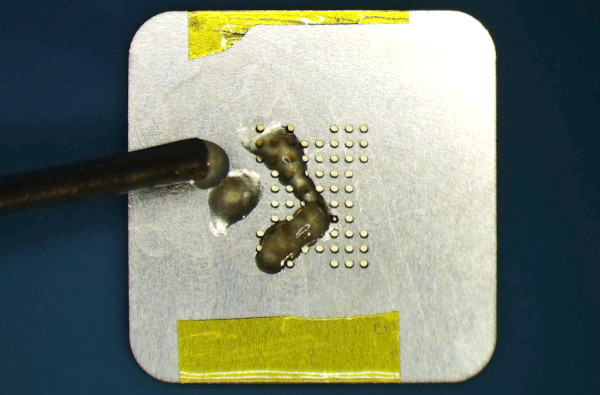Table of Content
From the whimsical “Google Doodle” to the integrated “Zerg Rush” game, Google has lent a sly sense of humor to all its platforms and this extends to the Home and Google Assistant. It’s not a surprise, either, since it was recently revealed that Google employed writers from both Pixar and The Onion to help build a personality into the assistant. When you get frustrated with Google AI , it’s important to remember that Google is playing the long game. The company eventually wants Google Home to develop an emotional rapport with its users. It’s an interesting exercise to push the envelope of Google Assistant’s search capabilities. You can ask Google Home what something is, how to spell a word, and ask it what a given animal sounds like.
One way this feature works is by reminding your kid where they put something. For this to work, they would need to tell Assistant where they are hiding something. When it’s time to find the item, they simply need to ask Assistant where they kept it. However, as a parent, you might for good reason be concerned about the safety of kids’ interactions with Google Home and Assistant. You can use the Google Home Web Simulator, which allows you to test in a browser without an actual Google Home device, or you can test on a device that is logged in with the same account.
Google Cast SDK
Things like dumping the BootROM of the system becomes possible. My goal will be to modify the NAND flash content until I can execute my own code. While extremely informative, the attack described by the presentation cannot be used against my own device anymore.

Apart from being an interesting challenge, running arbitrary code on the Google Home could be interesting for several reasons. Indeed, because the processor of the Google Home Mini comes without any public datasheet, arbitrary code execution can lead to a way better understanding of the system. Finally, it may be a mandatory step if one's goal is to dump the very low-level bootROM code of the main processor. I personally find this combination of a FT2232H and ICE40HX1K-TQ144 to be quite interesting and versatile. However, please note that using both the SPI mode and Synchronous FIFO mode of the FT2232H requires adding a EEPROM to the BOM.
Voice Skills
While the jury is still out on that, the folks at Google have taken it upon themselves to reinforce good manners in Assistant’s pint-sized users. In addition to personalizing the experience to each kid, it also places adults in control of kids’ accounts. Click “Save,” and we are done with the default welcome intent! If you see a screen like the one below, then you are on track. To start off, we will create an API.AI account, create a new agent and give it a name.

This EEPROM contains configuration data for the FT2232H and can sometimes be omitted. If it’s connected to the same account as your Google Home device, just say “OK Google, find my phone” and it’ll ring your blower remotely. From sports scores and history facts to geography knowledge and your nearest ATM, the assistant will endeavour to dig up something that fields your query.
Set a sleep timer
Last but not least, it's an interesting challenge that will need me to go down the rabbit hole. The content and structure of the NAND Flash will need to be understood. As explained before, the SoC of the Google Home Mini comes without any public documentation. Being able to run custom code on it is valuable to understand it better.
Be sure to install the Google Home app on your smartphone too, as it can serve as a central hub for all your devices when away from your smart display or smart speaker. In December 2020, Google ditched the ability for Google Home users to call UK phone numbers for free. But you can still use your smart display or speaker to call anyone with a Google Duo account.
But while it’s handy to help out with a variety of commands, some of the best features can’t be found without a bit of digging. To help owners get the most out of their devices, we’ve created a guide filled with tips and tricks, along with a few Easter eggs that may surprise you. I, for one, am excited about the future of voice as it becomes ubiquitous; screen reliance will reduce and customers will be able to interact naturally with their assistant. But first, it’s up to us to build the skills that people will want from their assistant. Next up in the ranks is voice + screen, this is known as a ‘Multimodal’ device , and are devices like the Nest Hub and the Echo Show. As smartphones have this functionality, they can also be considered a type of Multimodal voice-enabled device.
Our next step will be to test it on an actual Google Home device. In the next step, we will enable the API.AI agent to work with the Google Home device by integrating it with Google actions. However, even considering this easy access to the entire NAND Flash data, an extended secure boot implementation makes executing arbitrary code using naive methods impossible. But, as the second part of this article will demonstrate, it remains possible.
In our case, reading the datasheet of the NAND Flash used by the Google Home, the TC58NVG1S3HBAI6 gives the following details about the internal memory organization. This step can optionally be skipped if a LAST_DUMP file is provided. Receive the NAND Flash data and compare it to the content of filename. For unidirectional signals, this connection can be achieved directly. However, for the bidirectional signals of the data bus, some arbitration is needed. In this mode, the FPGA will directly connect all the NAND Flash signals between the Google Home circuit and the NAND Flash.
Moreover, when kids hear it from the voice of your virtual assistant, they are less likely to argue. From here, you can create your own applet, browse the list of other people’s applets to find the skill or edit your own applets. Whenever you choose to play ambient sounds, Home will automatically set a one-hour timer. All parents who worry about kids losing their p’s and q’s by barking out commands to virtual assistants can utter a huge sigh of relief. The smart home fraternity is still torn on whether it is necessary to use the words “please” and “thank you” with smart assistants.


No comments:
Post a Comment